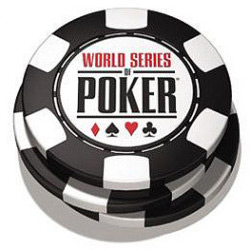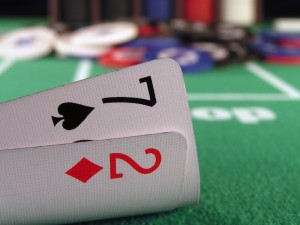Preparing Darus Suharto
I had the pleasure of hosting an event to help Darus Suharto prepare for the World Series of Poker main event. Darus finished in sixth place and took home more than $2.4 million. The main event has come a long way the last few years, as Darus took home close to the same amount that Chris Moneymaker won in his classic 2003 victory.
Eric “Rizen” Lynch was coaching Darus to help him prepare for the main event. Eric and I had talked earlier in the summer about various ways that one might prepare given the four-month layoff. Once Eric started actually coaching Darus, he called me about one of the ideas we had.
Eric’s main goal was to help Darus prepare for different scenarios that he might face at the final table, as well as help Darus develop some strategies against each opponent at the table. With this in mind, we invited a total of nine people to come to my house to run through various final-table scenarios. Each one of us tried to simulate the play of the particular opponents Darus would be facing, based on feedback from Eric and Darus.
We started the day by running through five different seating assignments. The goal was to help Darus understand how particular players and their stack sizes might affect play when seated to his left and when seated to his right. Given the short time that we had, we ran through five 15-minute levels just to get Darus comfortable with the structure changes. Once we completed the five levels, we changed up the seating assignments and ran through another five levels.
The first thing that became apparent was that even though players had relatively deep stacks, the pot sizes built up quickly, so that any significant pot played to the river would have a major impact on the two players involved. You could quickly go from chip leader to low stack, and vice versa, in a single hand (at the actual final table, this proved true, as the chip leader, Dennis Phillips, was dangerously close to being the first player knocked out).
After dinner, we concentrated on shorthanded play, and we basically took turns playing until everyone was tired and ready to call it a night. The next morning was focused on heads-up play, with Darus winning three of his four matches (I was given two chances and lost both). After lunch, Darus headed to the airport to go to Vegas for the biggest tournament of his life.
It was great meeting Darus. He didn’t get a lot of coverage on ESPN, but he is a fantastic guy, and a more advanced thinker than most probably give him credit for being. He reminds me a lot of the Dan Harrington of a few years ago, who projects a very tight image but uses that image to make a lot of moves that nobody suspects.
Eric was also impressive as his coach. He didn’t try to tweak Darus’ style, but focused on simply preparing him for various situations that he might find himself in at the final table.
The day and a half we spent together was a lot of fun, but it also inspired and motivated me while rejuvenating my own game. The exercises we went through gave me several ideas on how I could work on my own game.
During the simulations, I played the part of Scott Montgomery. So, while playing the hands, rather than play them like I would play them, I had to play them like I thought Scott would play them. This is an excellent exercise! When playing a style different than your own, you can see how your opponents react to you. You can see what strategies opponents use against you that put you in awkward situations. You can also see how the player’s style works and maybe incorporate some of that into your own game. If I ever play Scott Montgomery at the tables, I should be quite prepared! But I don’t need to play Scott for this exercise to pay dividends; I simply need to play players who use a style similar to Scott’s.
I am going to start jotting down some common styles of play, like loose-aggressive, loose-passive, tight-passive, and so on. But I’ll take it a little further and add players who like to three-bet a lot, or players who like to limp when first in. I’m quite familiar with Jon “PearlJammer” Turner’s style of play after working with him on the book I published and he co-authored, Winning Poker Tournaments One Hand at a Time. Jon likes to manage the pot size, so another style would be players who like to keep the pot small.
Once I have some styles in mind, I will play some Internet tournaments trying to emulate these players. If you truly want to get into the minds of your opponents, try playing like they do!
Once I’ve learned the ins and outs of each style, I will then start preparing some strategies to use against those styles, depending on whether they are sitting to my left or to my right. Once I’ve done this, when I sit down at the table, instead of learning eight new styles of my opponents, I will simply fit each of them into one of my “profiles.” Once I’ve labeled them, I should know immediately how I want to play them. From there, I can tweak my strategy based on a particular player’s little differences from the profile I’ve made.
This exercise should achieve three things:
1. When I am actually playing against a player who fits a certain profile, I should be more able to get inside his head, since I’ve actually tried playing like he does.
2. I will learn what strategies to utilize against those types of players.
3. I can start incorporating new things into my own game when I see how different styles work.
None of this is really new. Many players have talked about labeling playing styles and developing strategies against them (for example, The Psychology of Poker by Alan Schoonmaker and The Poker Mindset by Ian Taylor discuss this in detail). But I want to take it to a new level by actually playing different styles, as I think it gets to the core of trying to get into the minds of your opponents.
Congrats to Darus on his great run this year. I’m confident that we’ll see him at some more final tables in the near future.
Submit your review | |






